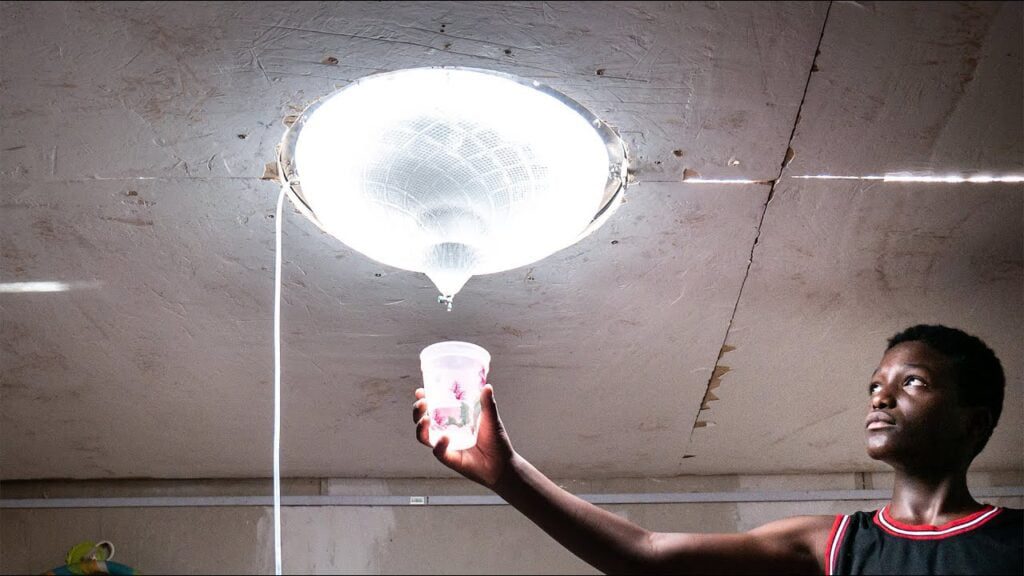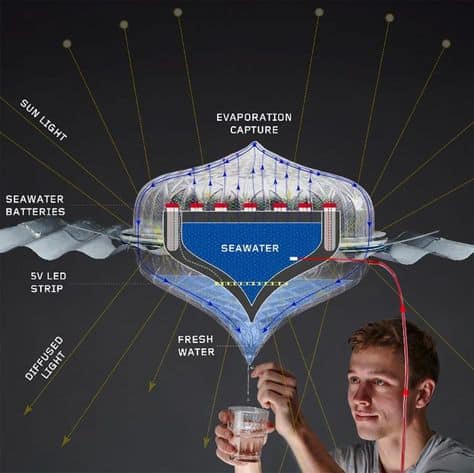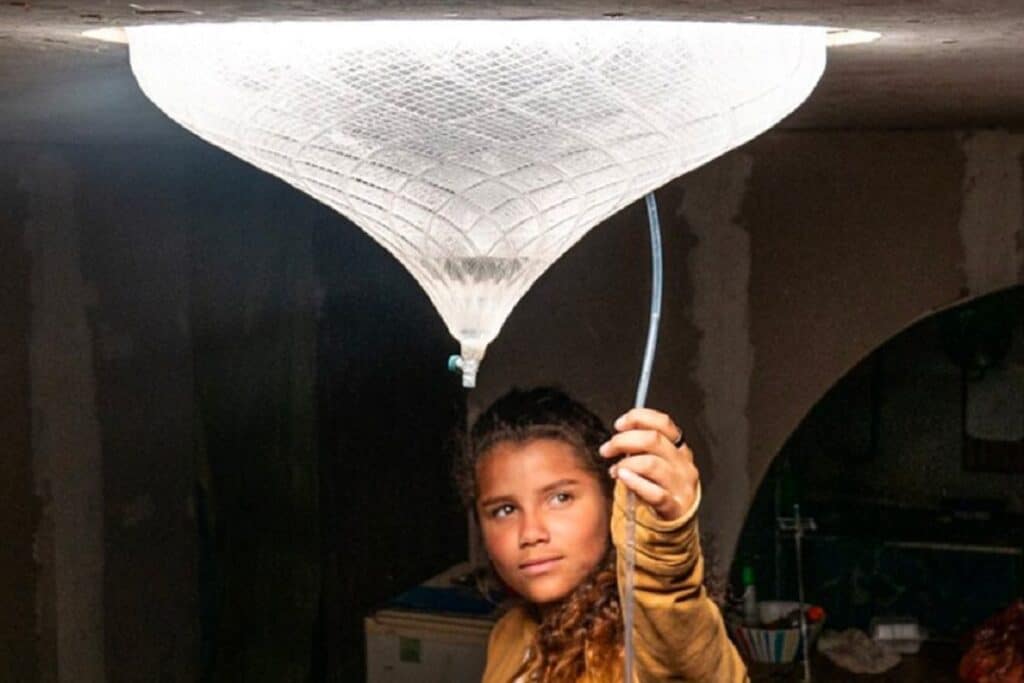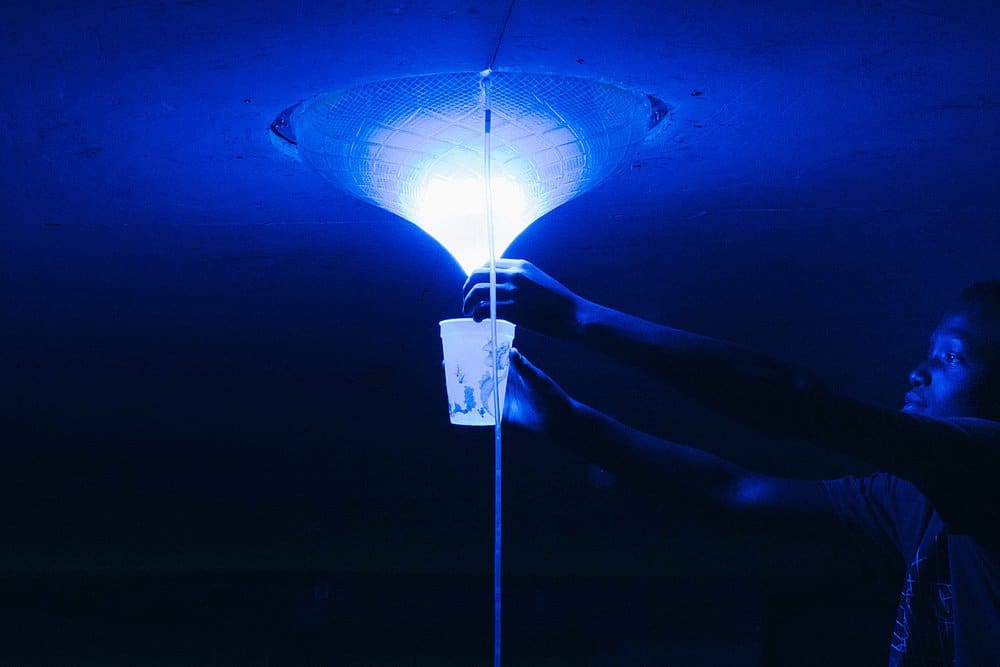Architect Henry Glogau thinks about future resource scarcity with this lighting and water desalination project. The Solar Desalination Skylight is a "circular" and autonomous solar chandelier: it produces light, drinking water and electricity. Waste product? A brine useful for creating more drinking water.
Glogau, who works for the innovation unit of 3XN in Copenhagen, created the product in collaboration with the Chilean NGO TECHO for a coastal community in Mejillones, Chile, called 'Nueva Esperanza'.

How does the 'circular' chandelier work?

“The Solar Desalination Skylight is a playful yet urgent response to the water and energy crisis in our coastal communities,” Glogau said in a statement. “It was essential that the chandelier had a familiar look and not a high-tech contraption: and then the basic principle of the design, it had to be a circular device.”
Goglau took a holistic view, working with nature rather than against it. And it seems to have succeeded, if you consider that the chandelier also won first place in the "Responsive Design" category of the Design Educate Awards.
The ceiling lamp relies on salt batteries and solar energy. During the day, a small solar panel charges the LED light strip. It also draws energy from brine waste during evaporation to build a chain of salt batteries. Placed in tubes with copper and zinc, these 12 saltwater batteries provide electricity to the skylight at night through a chemical reaction when placed in tubes containing copper and zinc.
The dome shape is combined with a pattern of water channels on the surface by a curvilinear shape. The designer created a CNC-milled mold and vacuum-formed it to the final shape. Clean drinking water is brought up from the bottom using a tiny tube and seawater manually pumped into it.

Working with local communities
The initiative also started a discussion within the Nueva Esperanza community about resource scarcity, according to Glogau. Local residents were consulted during the development process to create low-tech versions of the device using everyday objects such as plastic bottles, cans, knives and duct tape.


